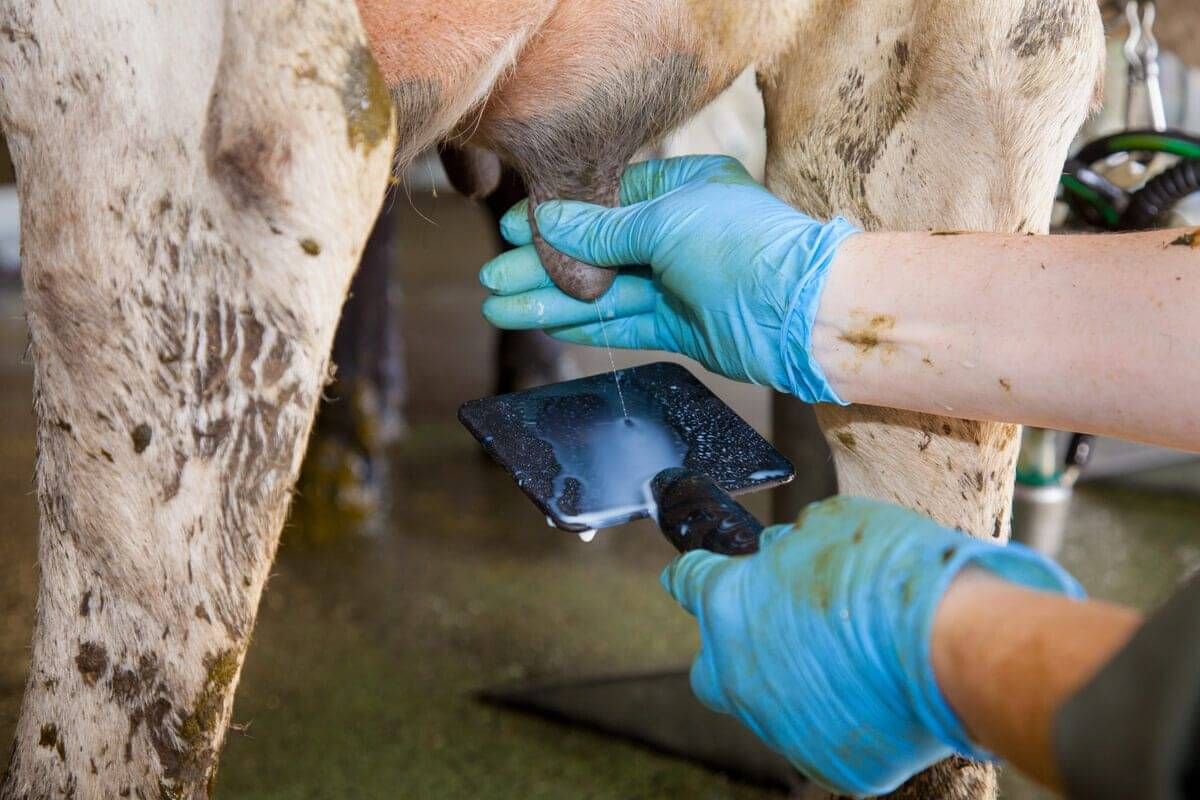MASTITIS
Mastitis is an inflammation of the udder. In cows, it is usually caused by bacteria which have entered through the teat canal and moved to the mammary tissues.
The bacteria multiply and cause an infection, which causes the cow’s own immune system to respond. This leads to an influx of inflammatory cells into the area where the bacteria have set up an infection. We see this immune response as an increase in the somatic cell count (SCC) of the milk from that quarter.
Although “mastitis” means an inflammation, the terms “mastitis” and “infection” are often used interchangeably. This is because minimising mastitis is all about minimising these bacterial infections.
Cows with a healthy udder:- produce more milk
- are easier to milk
- have less mastitis
- suffer less pain
- are more likely to get in calf
- have a longer productive lifetime and
- provide more profit
Somatic cell counts (SCC)
Somatic cells are mainly white blood cells that increase in number in response to the bacteria that cause mastitis.
High somatic cell counts mean lower production- Cows with high somatic cell counts usually produce less milk than those with lower counts. They may also be less fertile.
- The earlier you identify and treat infected cows the more productive your herd will be.
- Just a few infected animals can increase the bulk milk somatic cell count in your vat and put you at risk of being penalised by your dairy company.
- Regular herd tests help keep your bulk milk counts at an acceptable level by identifying individual animals with high somatic cell counts that may need treatment or culling.
What can we use SCC for
Measuring somatic cell counts help control mastitis and improve milk quality in your herd by identifying infected animals that need to be treated or culled.
Rapid detection and treatment of cases means fewer chronic infections develop, and less chance of infection being passed to other cows. Use records of clinical cases and treatments to monitor herd level of mastitis and identify individual cows for culling.
Somatic cell counts identify cows with sub-clinical mastitis. Unlike cows with clinical mastitis, cows with sub-clinical mastitis show no physical signs of infection but they are often less productive. They may also infect other animals in your herd.
Regular herd tests help prevent sub-clinical mastitis from becoming a problem in your herd.

Somatic cell count targets
Somatic cells are always present in milk. A series of bulk milk somatic cell counts (SCC) should be reviewed to see both the level and trend for a herd. Cows regularly shed a small number of cells in their milk. In mid lactation, normal milk can contain 20,000 to 150,000 cells/mL.
There should be concern once a cow has between 120,000 and 150,000 somatic cells in every millilitre of milk it produces. The higher the somatic cell count the worse the infection.
Why is this important?
- A high SCC indicates a high level of mastitis (usually subclinical) in the herd
- About 15% of cows have (subclinical) mastitis for every 100,000 cells/ml
- Sharp rises often indicate missed clinical cases
- Impact of mastitis on SCC is more pronounced when fewer cows in-milk e.g. at the start or end of season
If your SCC exceeds your dairy company's penalty level, individual cow counts can be used to identify offending cows. Milk from these cows can be withheld from the vat until the cows are cured and their SCC lowered.
In all herds, a sudden increase, of 50,000 cells/mL or more, may indicate that one or more clinical cases have been missed. The impact will be more pronounced for smaller herds, or when there are fewer animals in the herd, such as at the start or end of the season.
Herds with a higher SCC may have more fluctuations of the SCC on a day-to-day basis because there will be many more infected quarters.
On average, there are 15% of cows infected for every 100,000 cells/mL up to 300,000 cells/mL.

You have a problem with SCC if you have:
- SCC grades
- SCC alerts or warnings
- Spikes in SCC (+50,000 cells/ml)
- Upward trend in SCC steeper than target curve
- SCC above industry average - see Industry Benchmarks
How to improve
Although the SCC gives an overview of milk quality in the herd, cell counts from individual cows are generally required to diagnose and manage mastitis problems in herds.
The main aim is to divert high somatic cell count from the vat through:- Excluding cows from supply
- Strategic drying off of specific quarters or cows
- Strategic culling
Advice is readily available from dairy companies and veterinarians to help solve a high SCC problem. Some private consultants specialise in mastitis control.
Demerit relief (redirection of financial penalties) may be available from your dairy company to offset the cost of professional advice.
The trigger points for seeking advice will vary from farm to farm.
A full investigation may be required if:- One or more SCCs are above the penalty threshold
- Two or more SCC warnings are received
- Spikes in SCC are regular
- SCC trend upwards is steeper than your target curve
- SCC monthly averages are “off target” for the past 3 months
Talk to your veterinarian and farm advisor support network if you have concerns around SCC and mastitis within your herd.
